Living in a shipping container home in the UK can be a practical housing solution, especially for those looking for affordability and sustainability. A growing trend internationally, shipping container homes repurpose steel shipping containers into residential dwellings, known for their robust structure and adaptability. These homes offer a unique blend of modern design and industrial aesthetics, appealing to those who value minimalism and eco-friendly living.
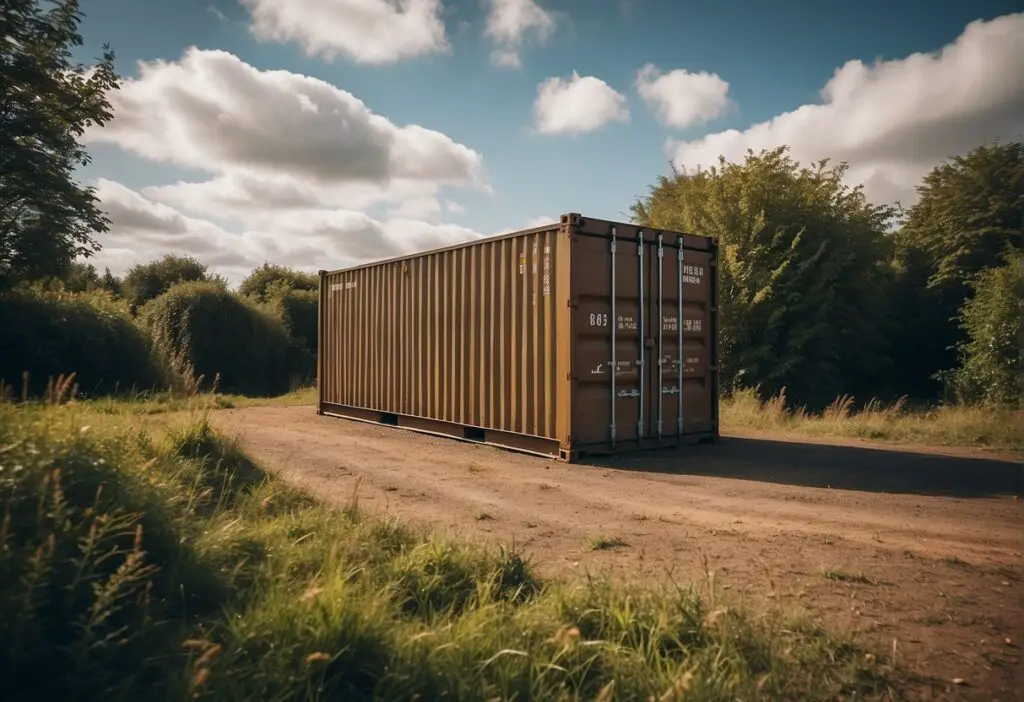
However, the prospect of utilizing a shipping container as a permanent residence on private land in the UK is subject to planning regulations. While these homes are not always considered permanent structures, which can sometimes bypass the need for planning permission, this is only applicable if the container is to be used temporarily. If a resident intends to live in a shipping container for an extended period, it is likely that planning permission will be necessary.
The planning permission process evaluates several factors including the intended use, the time the container will be in place, and its visual impact. Permitted Development Rights could allow the placement of a shipping container without planning permission under certain conditions. However, those considering such an endeavor should be aware of the limitations and restrictions, and may need to seek building regulations approval depending on the specifics of their project.
Legality and Planning Permission
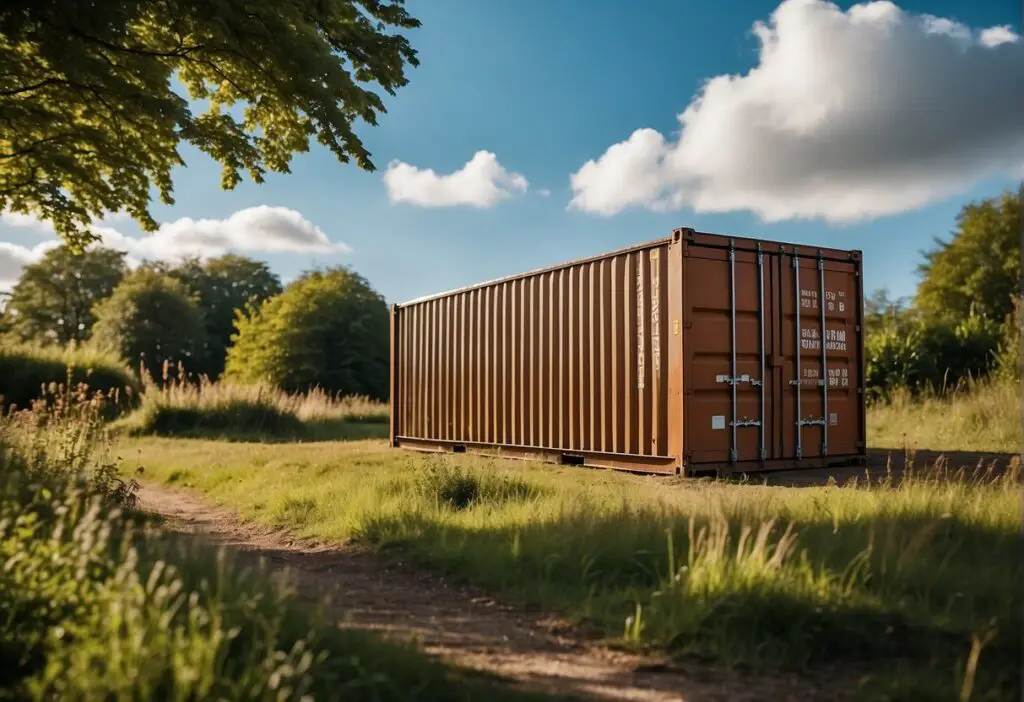
In the UK, the legal framework guiding the use of shipping containers as living spaces on private land is comprehensive. Local planning authorities are responsible for determining whether a shipping container can be used as a dwelling. Usually, obtaining planning permission is a prerequisite, as containers are often considered permanent structures once they undergo conversion for living purposes.
Temporary structures, which one might inhabit for a short period, might not always require full planning permission. However, for a shipping container to be used as a residence, it likely needs to comply with building regulations to ensure the structure is safe and habitable.
Residents should consult with their local council to understand the specific regulations, which can include restrictions in listed buildings, within a national park, or an area of outstanding natural beauty. Each council will have different criteria and definitions for what constitutes temporary versus permanent structures.
Key Considerations:
- Planning Permission: Essential for permanent homes, might be bypassed for temporary use.
- Building Regulations: Safety, design, and sustainability must be addressed.
- Local Council: Specific rules and processes dictated by the local governing body.
- Listed Buildings/National Parks: Additional constraints may apply.
It’s crucial for residents to engage with their local planning authority early in the process to navigate the regulations effectively and legally live in a shipping container on their own land in the UK.
Location and Site Requirements
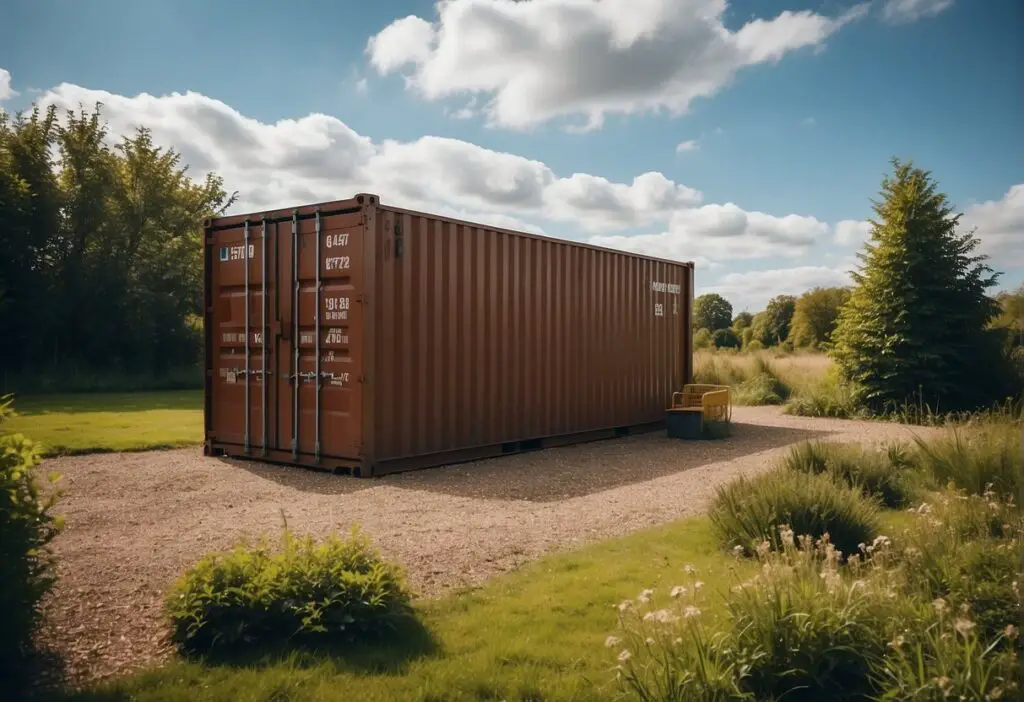
When considering a shipping container as a residential space on one’s own land in the UK, specific location and site requirements such as zoning laws, accessibility, and existing infrastructure play crucial roles.
Specific Location Considerations
The specific location of a shipping container on a plot of land is subject to local authority regulations. Individuals must check with their local planning authority to understand the bylaws that apply to their region. Permitted developments may exempt some container homes from needing planning permission, but restrictions could vary if the land is within a garden, near neighbouring properties, or part of a farm.
One must also be cognizant of the impact on neighbours; containers should be positioned in a manner that considers both aesthetics and privacy. Further, the character of the area and whether the container could be deemed out-of-keeping with the local environment will affect approval.
Accessibility and Infrastructure
Accessibility to the shipping container is essential not only for installation but also for emergency services. This means there should be adequate roads or a driveway to allow for smooth access. Provision for utilities, such as water, electricity, and sewage, constitutes the necessary infrastructure which must be factored into the site’s feasibility.
The land should be assessed to determine whether it can support the necessary infrastructure without exorbitant costs. For instance, remote areas might lack the connections needed for residential purposes, thereby complicating the project or making it unsustainable.
Proper consideration and adherence to these aspects are vital for the successful use of a shipping container as a living space on one’s own land.
Types and Customization of Container Homes
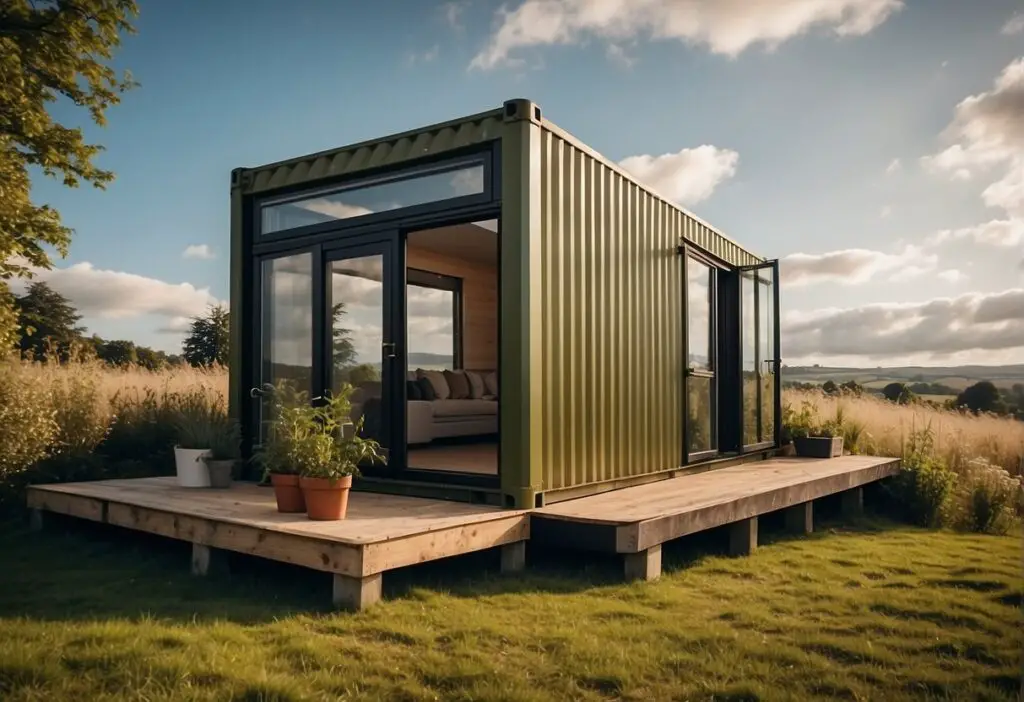
Container homes are gaining traction as an innovative housing option that balances eco-friendliness with customization. The variety of designs and the potential for modification allow for a sustainable and bespoke living space.
Standard and Bespoke Designs
Shipping container homes come in standard formats, which typically utilize the original dimensions of the containers, and bespoke designs, allowing for individual preferences and specifications. The standard designs often promote a sense of simplicity and efficiency in their floor plans, being an eco-friendly alternative to traditional construction. Meanwhile, bespoke designs offer a tailored approach to meet unique requirements, incorporating complex architectural features and personalized floor plans, transforming the concept of a converted shipping container into a custom home.
Conversion and Modification
The process of creating a shipping container home includes various levels of conversion and modification. Basic conversions might involve adding doors, windows, insulation, and essential utilities. On the other hand, extensive modifications can create a fully customized living experience, including multiple floors and a combination of several containers. These homes can be outfitted with modern amenities, creating spaces that are both sustainable and comfortable. Customization options can also take the form of add-ons, such as solar panels or rainwater harvesting systems, providing an added layer of sustainability to these already eco-friendly homes.
Container homes demonstrate their adaptability and potential for personalization, making them a serious consideration for those looking to build on their own land in the UK while prioritizing sustainability and innovation.
Cost and Sustainability
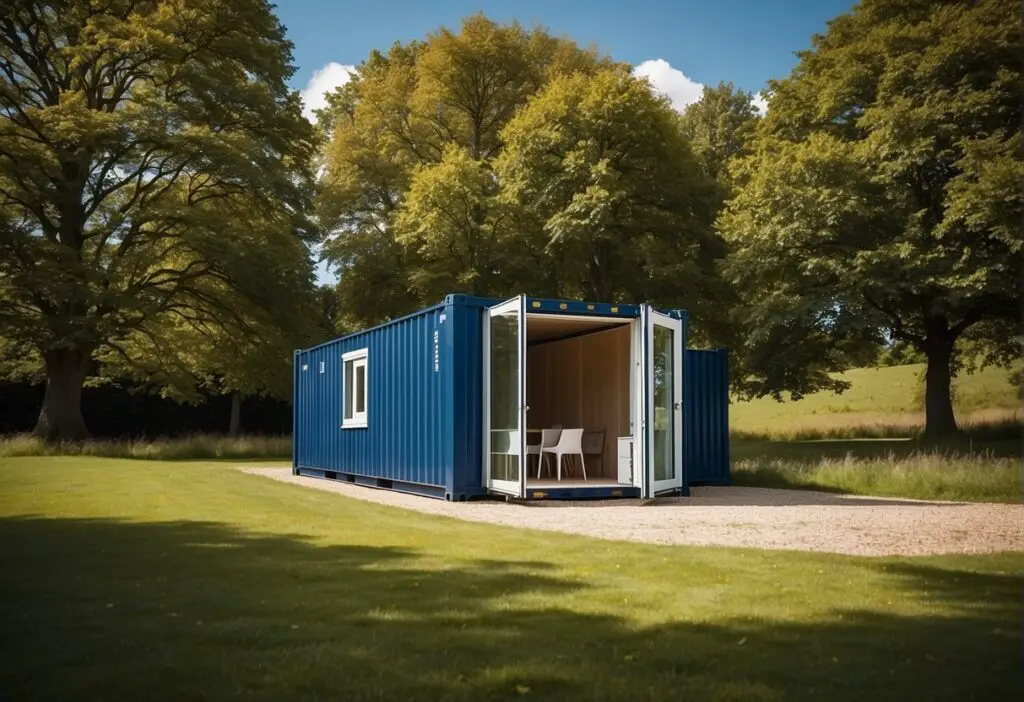
When considering a shipping container home in the UK, potential owners find that the cost-effectiveness of such structures can be significant. A basic container solution could range from £18,000 to £36,000, depending on whether one opts for single or multiple units. It’s beneficial to understand that beyond the initial investment, there are other financial aspects to consider: funding for permits, site preparation, customization, and utility connections.
Sustainability is another key factor driving the adoption of container homes. They often represent a form of eco-friendly living as the reuse of containers for housing reduces industrial waste. Additionally, these structures can be outfitted with sustainable technologies like solar panels, rainwater harvesting systems, and insulation made from recycled materials.
Despite the constraints, there’s a growing recognition that container homes can contribute to the creation of affordable homes. One must be aware of the regulations that might affect the permit process, acknowledging that permitted development rights may not apply and that a full planning application could be necessary.
To conclude, those considering shipping containers as a residential solution should weigh the initial affordability against the sustainability benefits and the responsibility of ongoing maintenance. Thorough research and careful planning are imperative to understand the full scope of funding and ongoing costs associated with these innovative living spaces.
